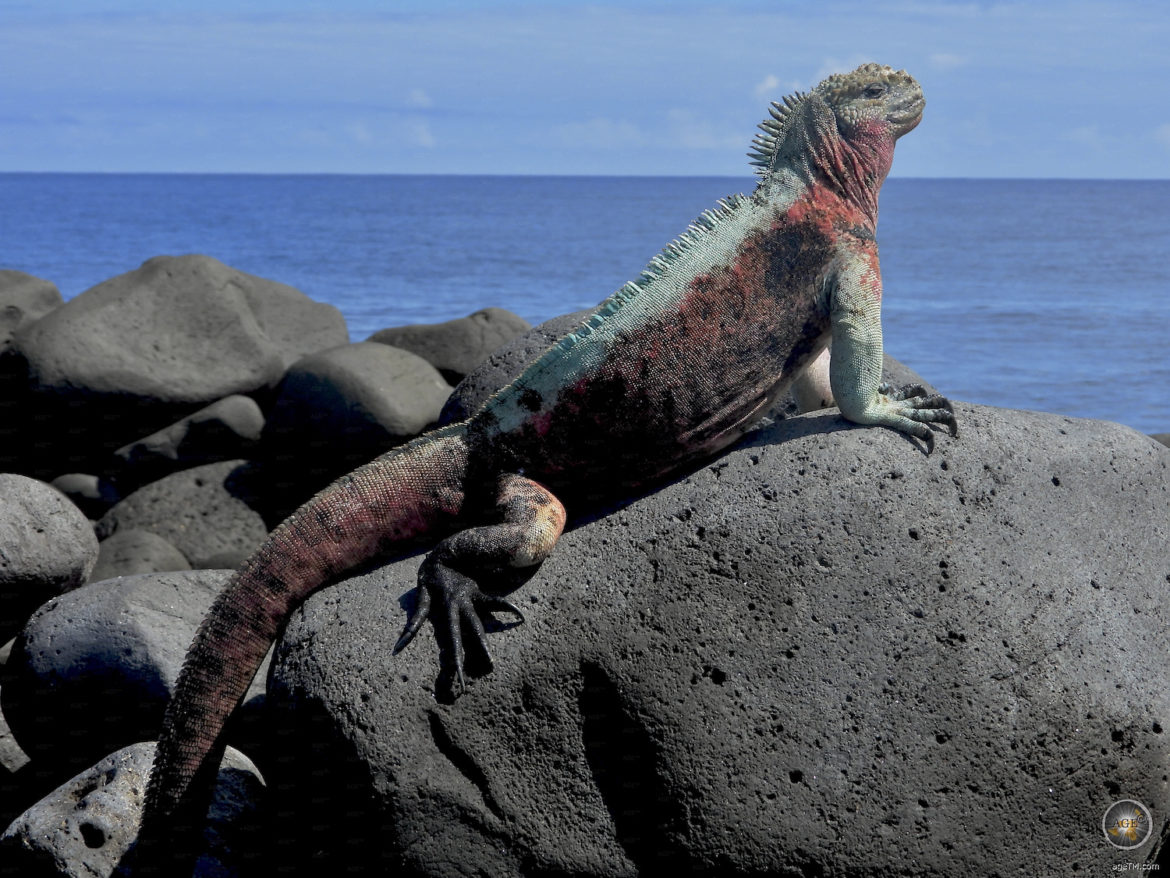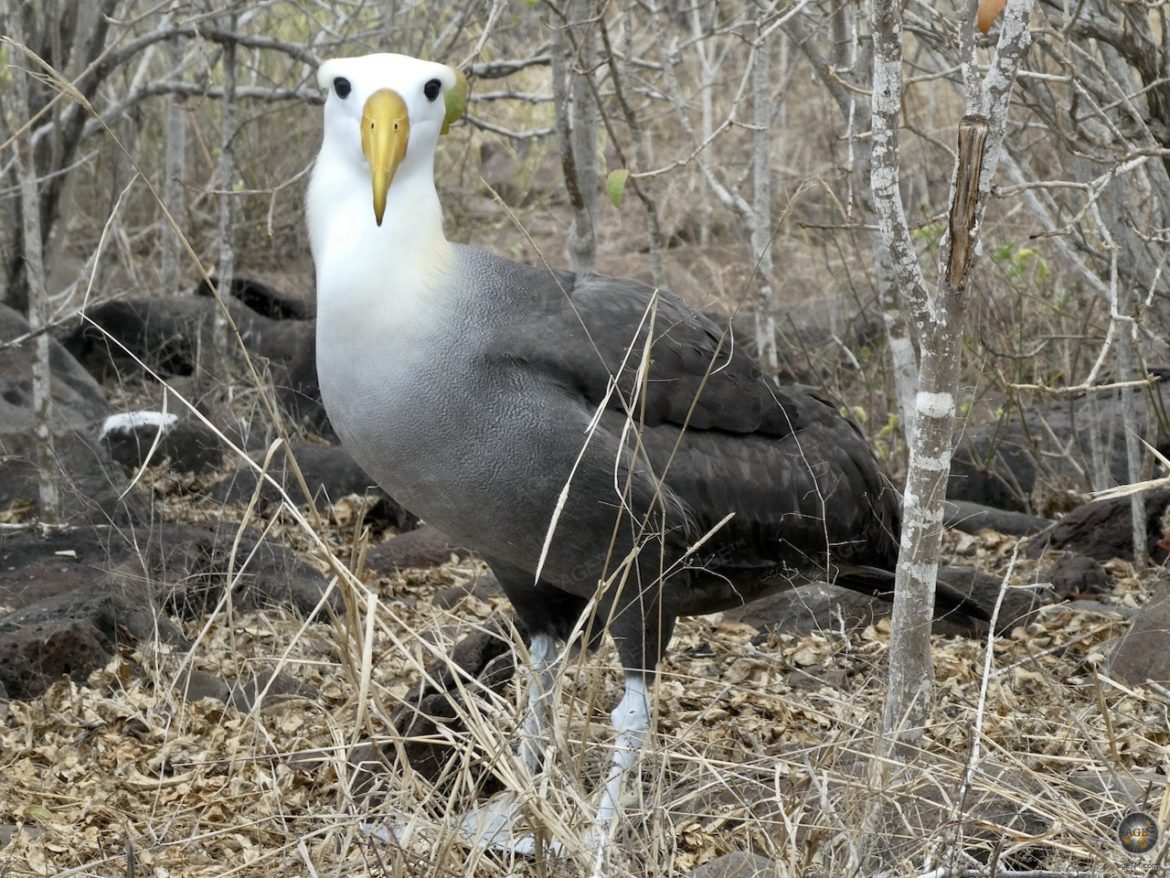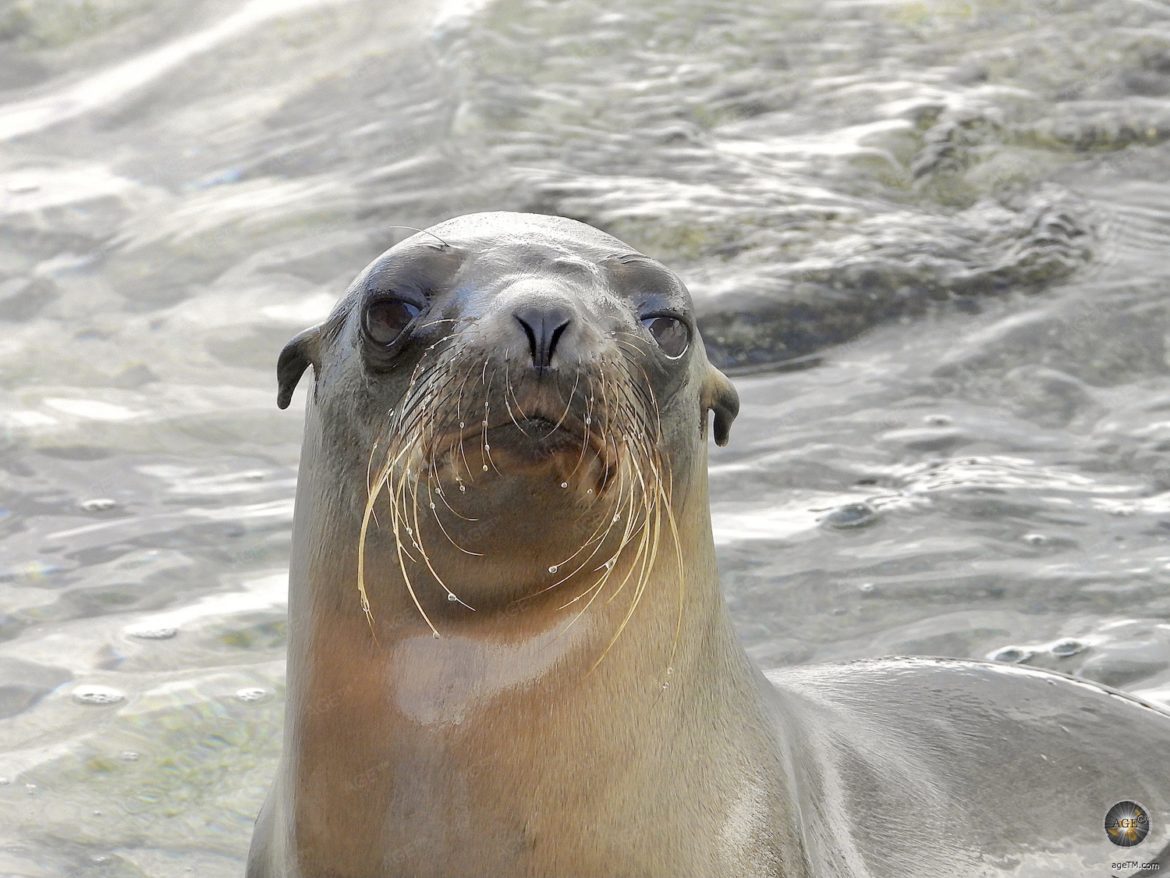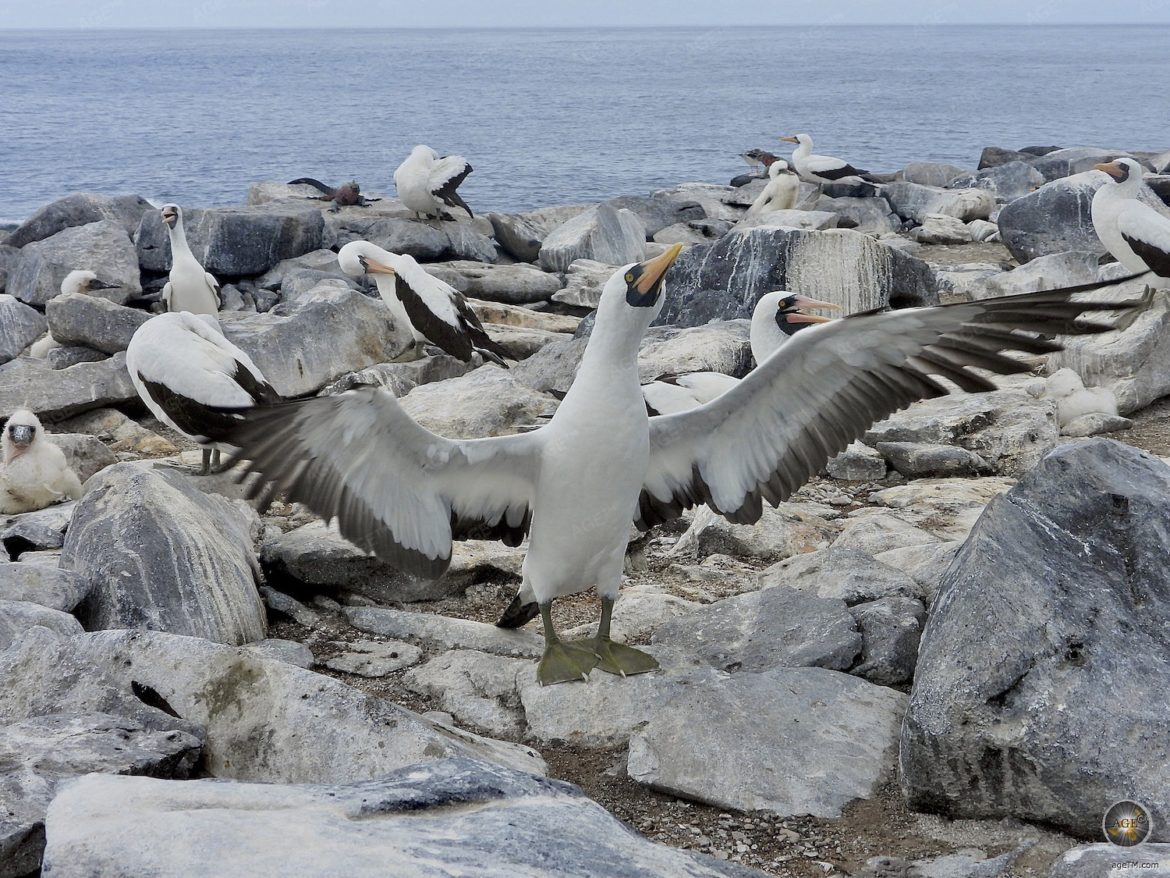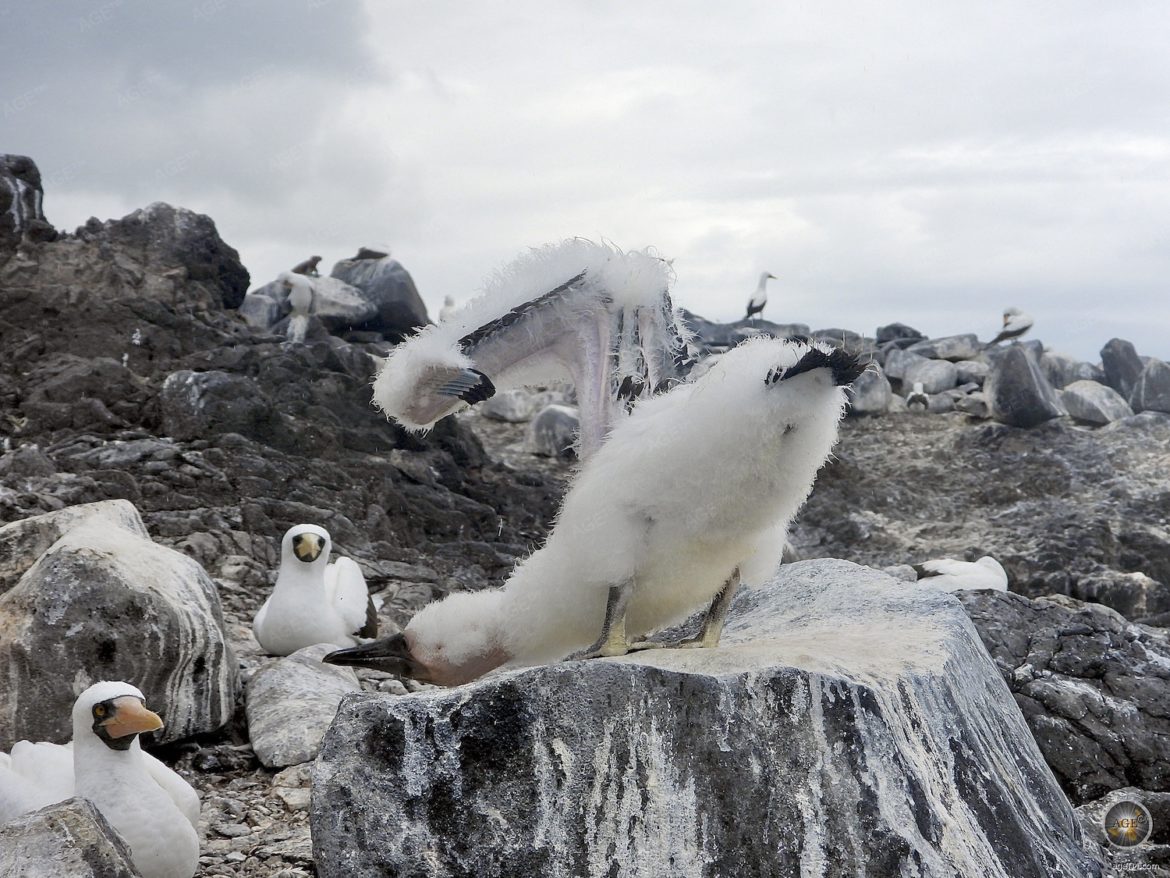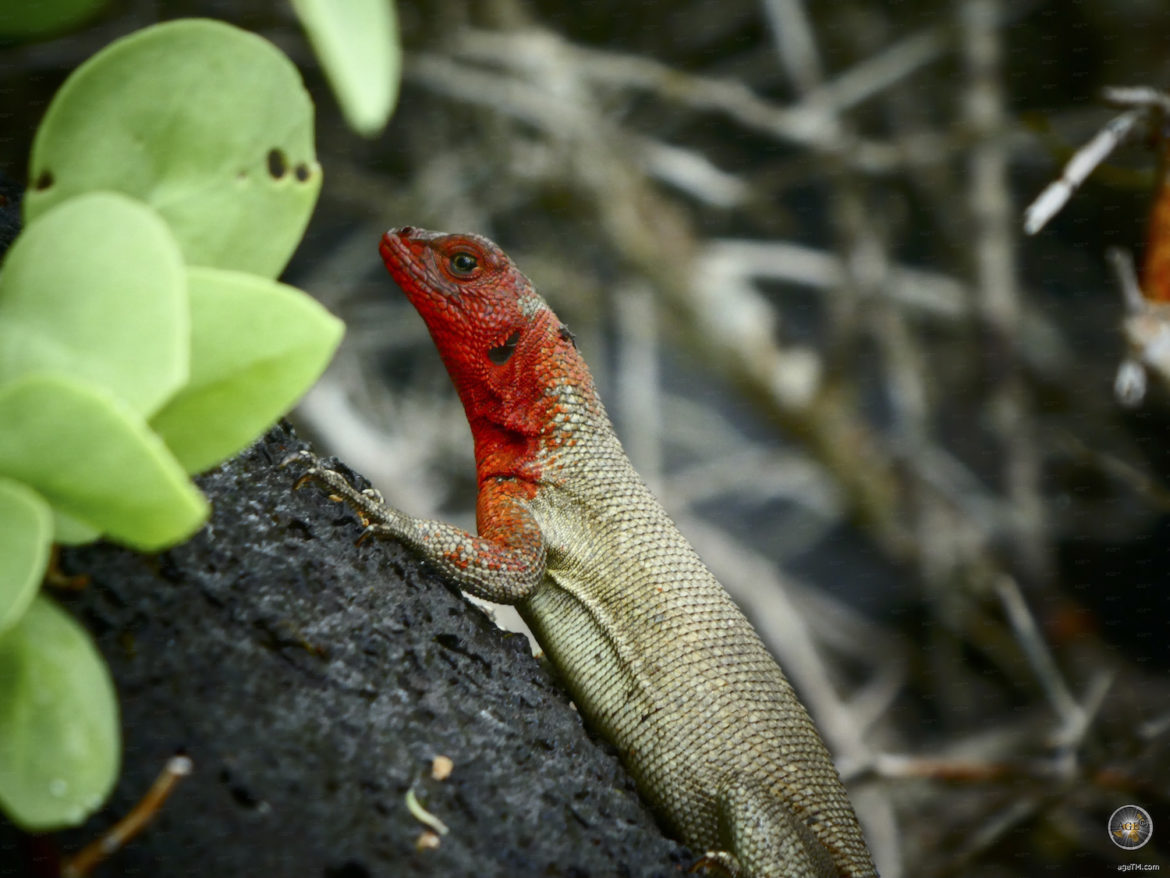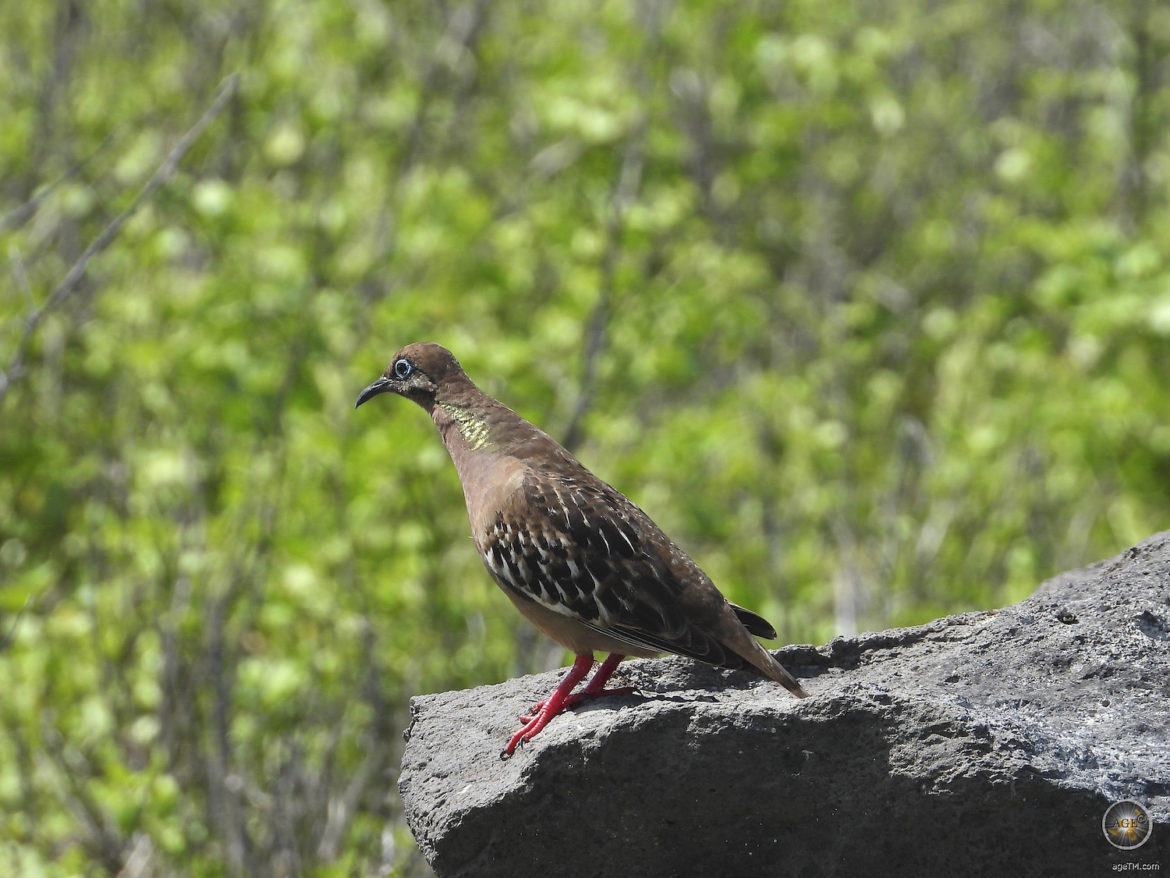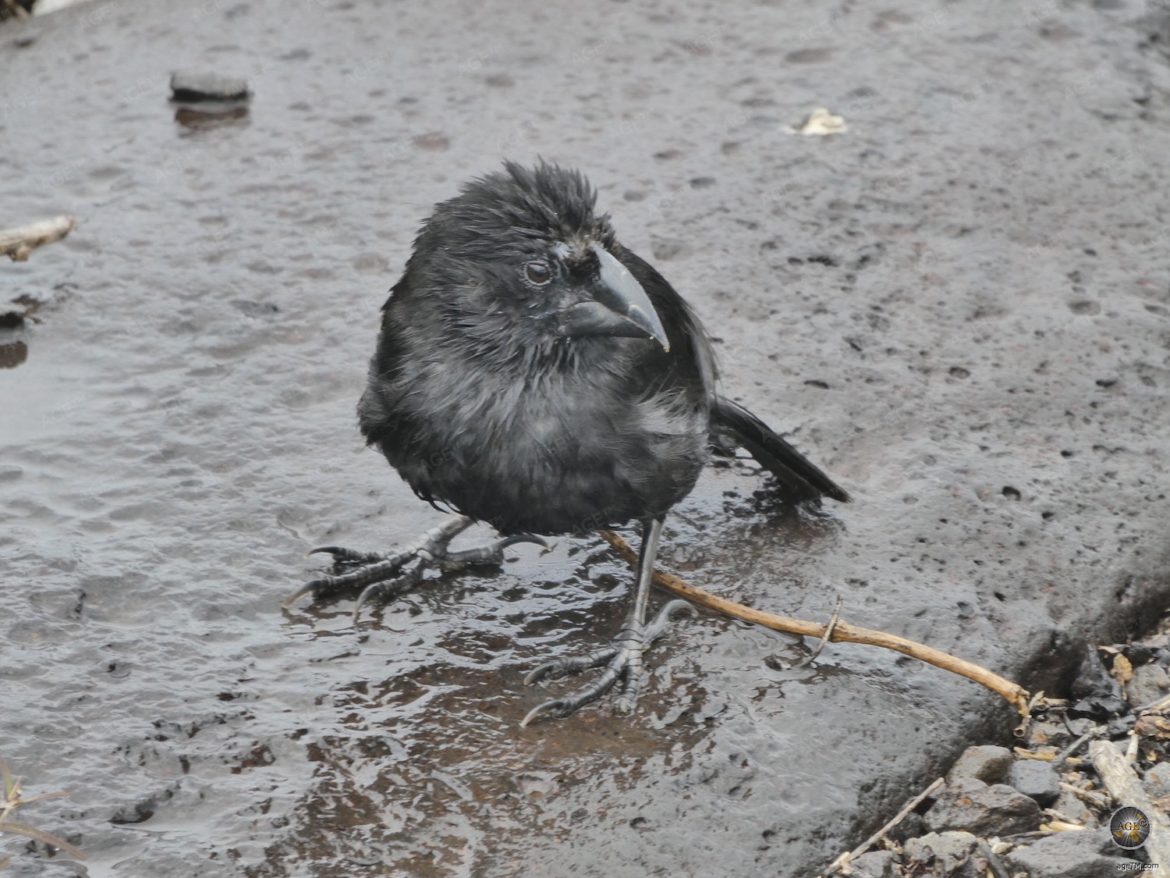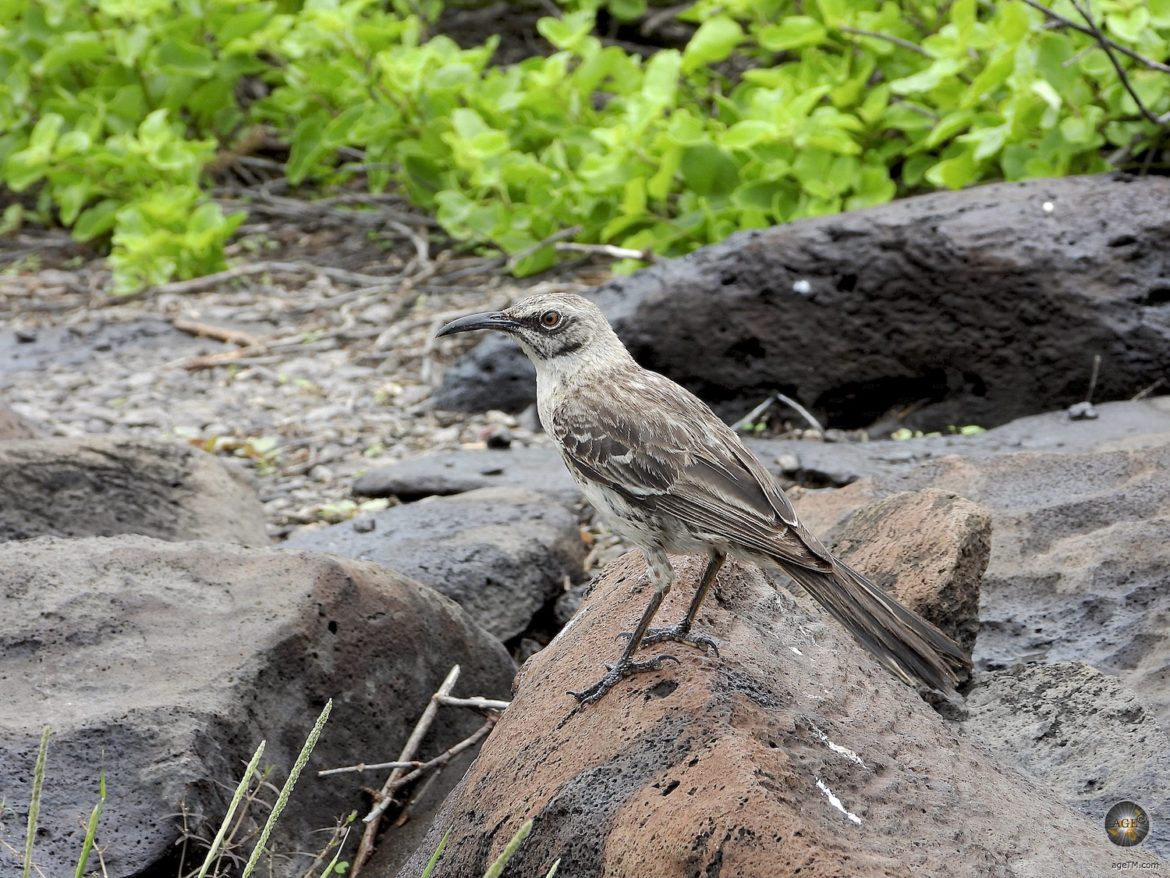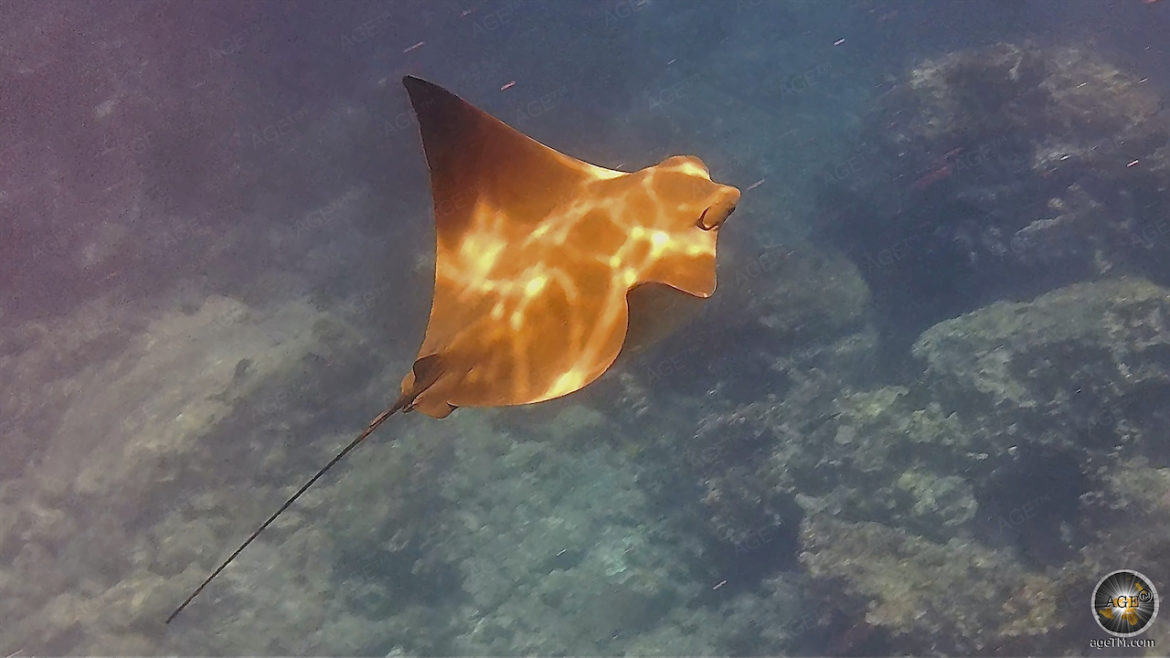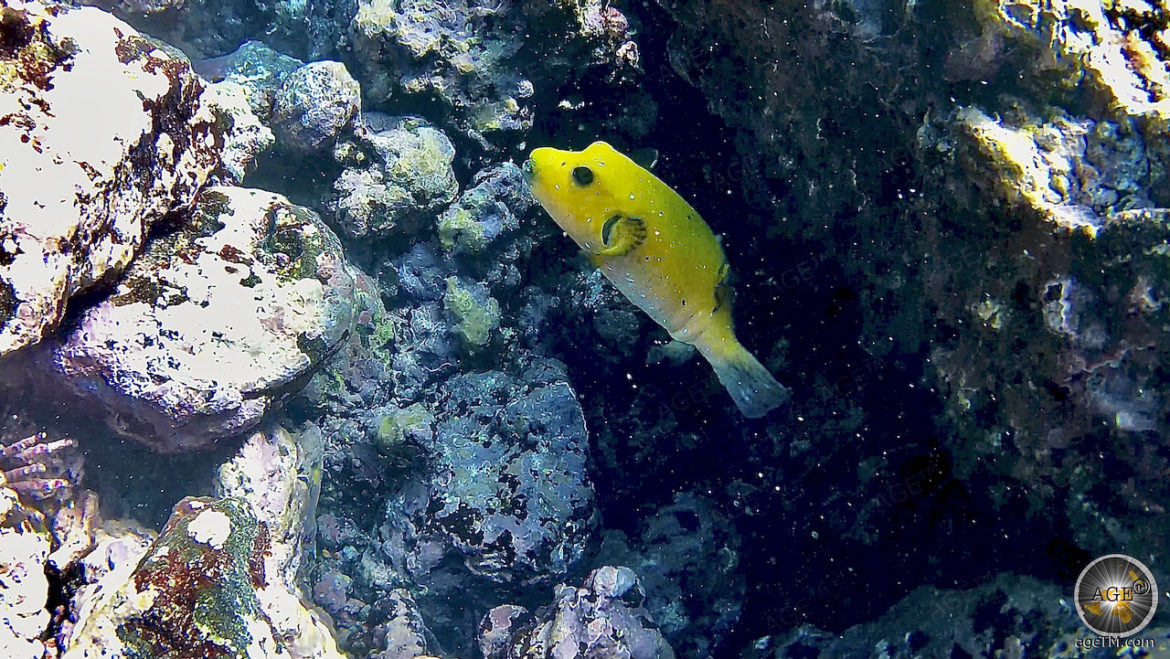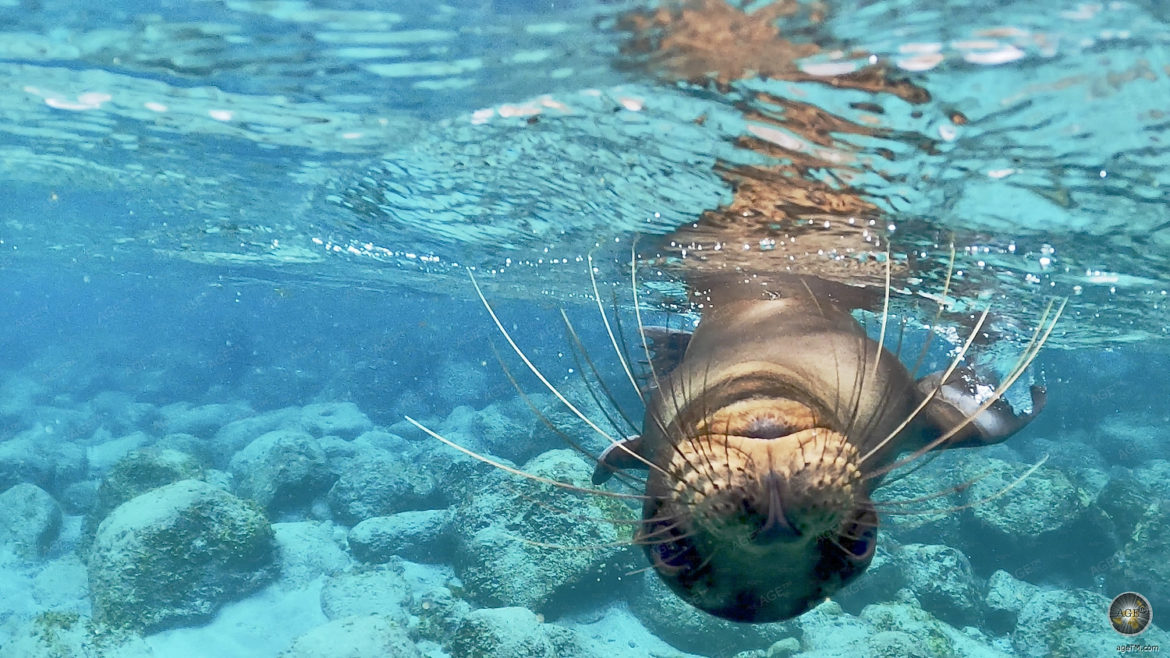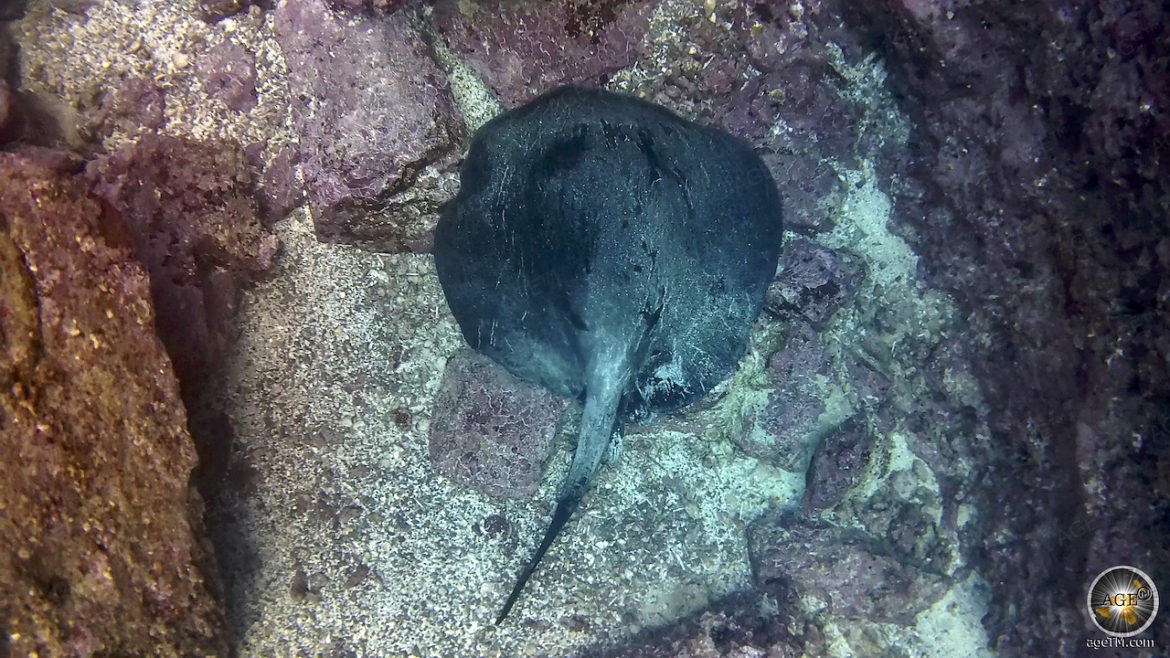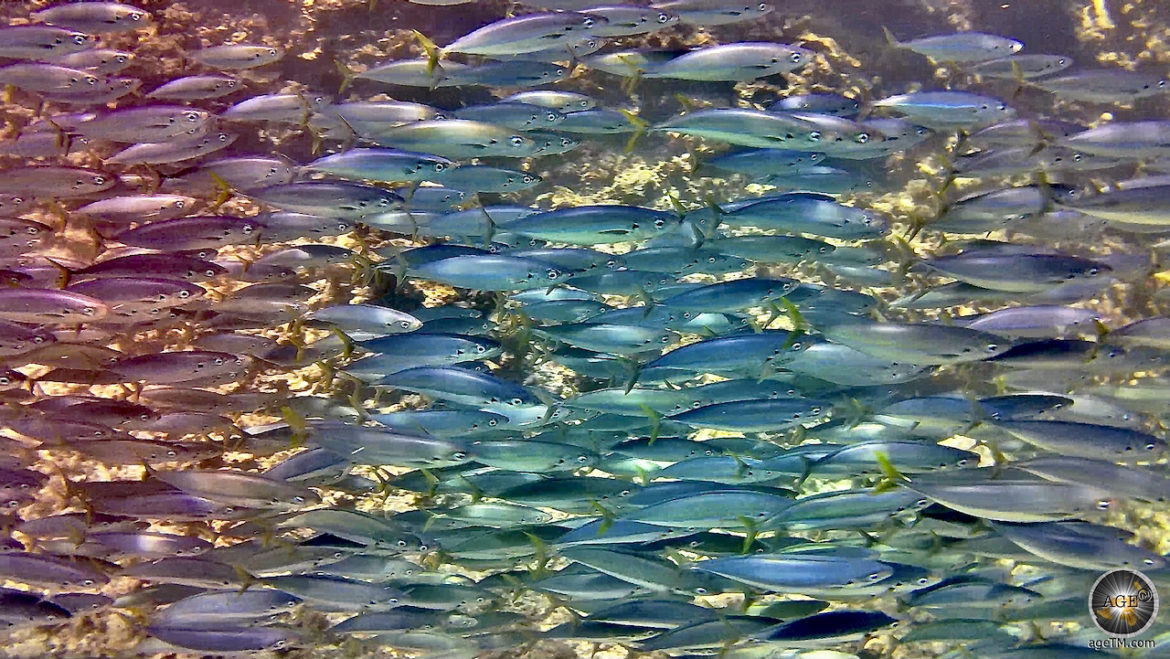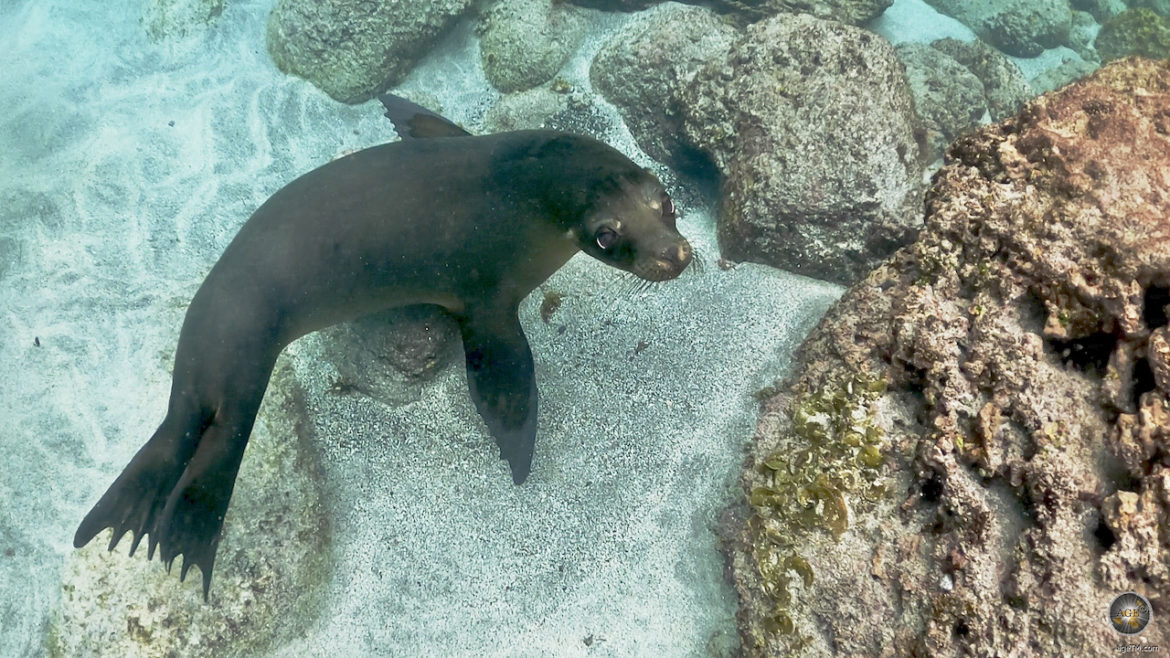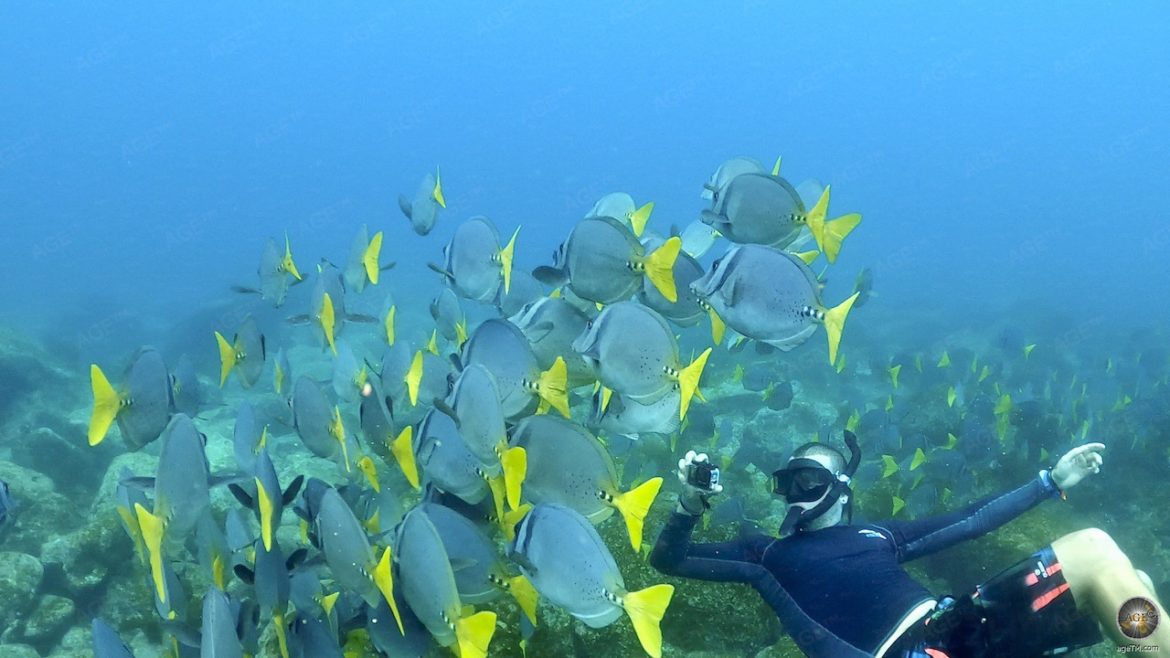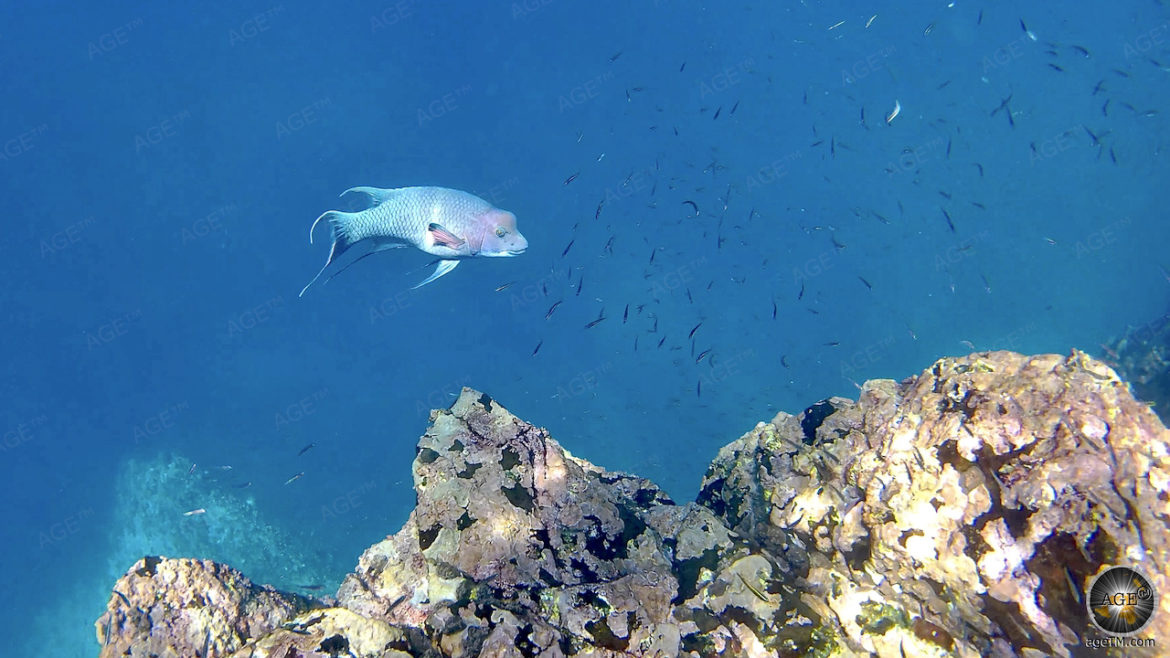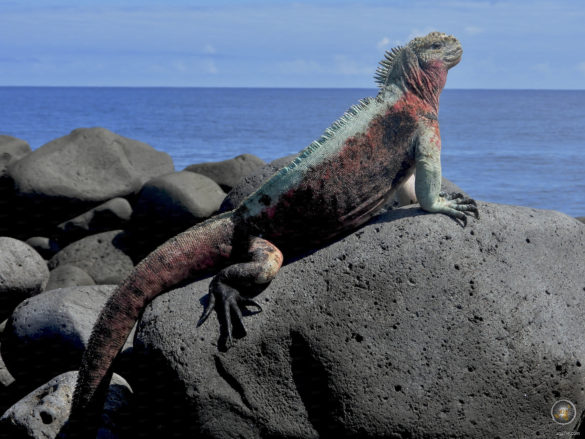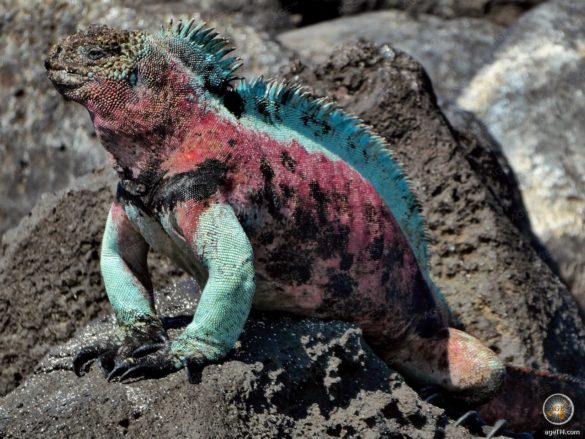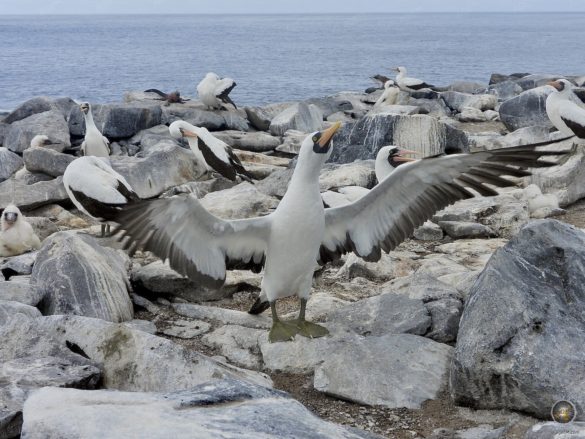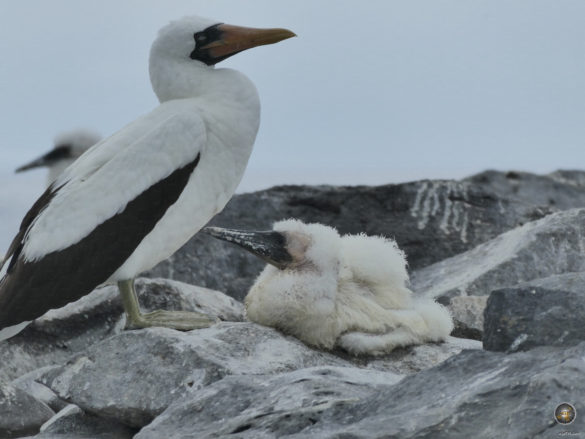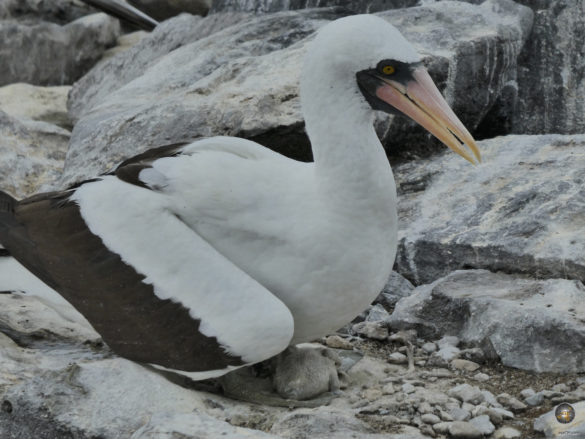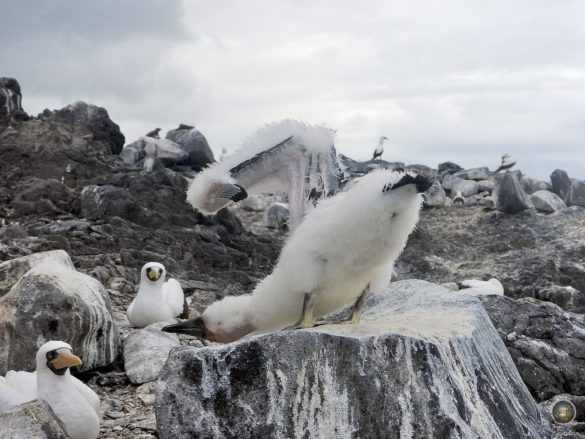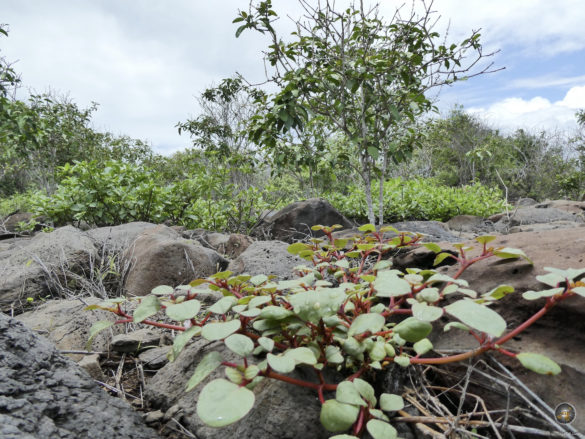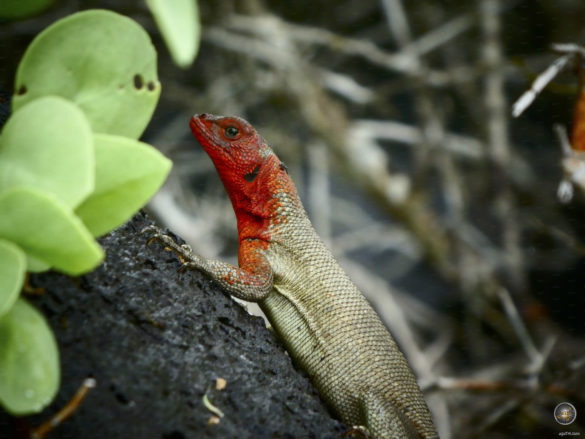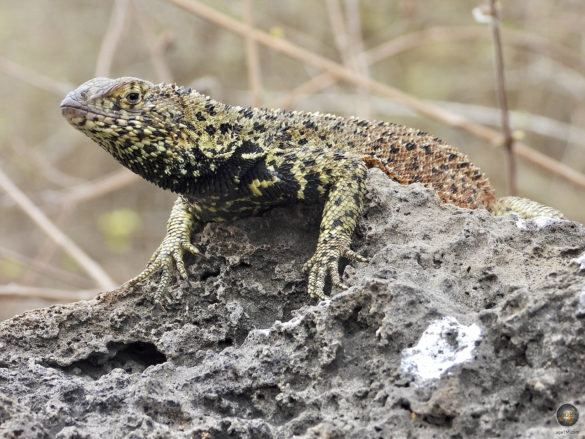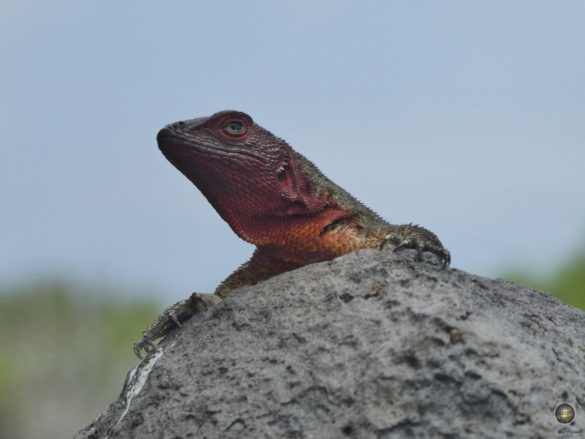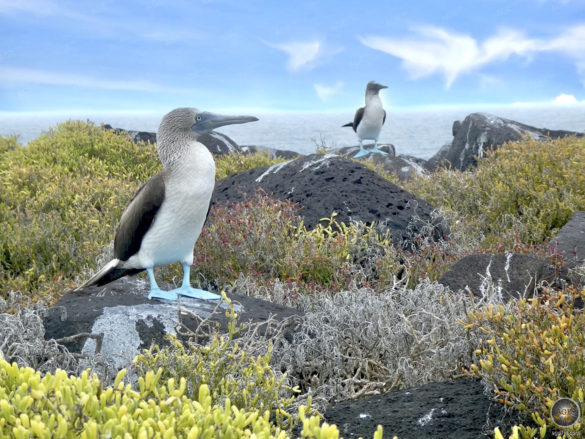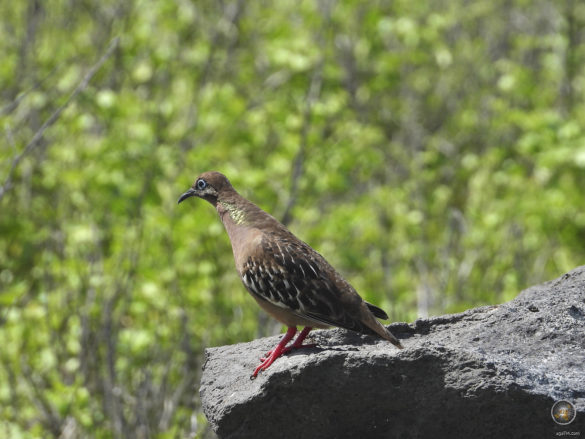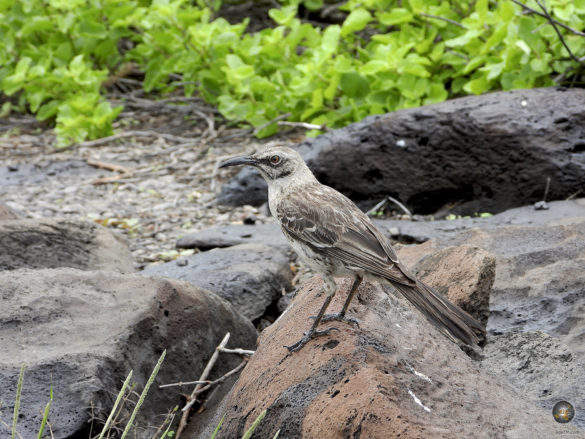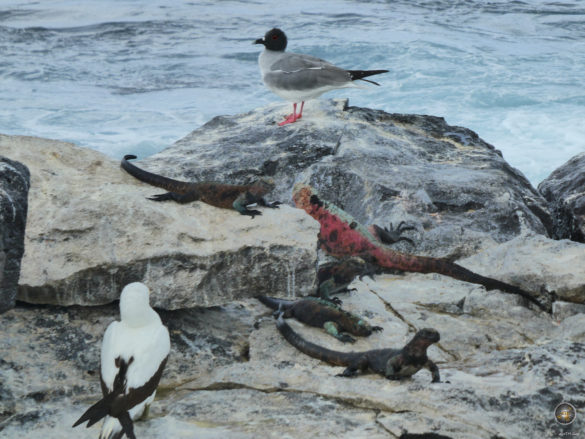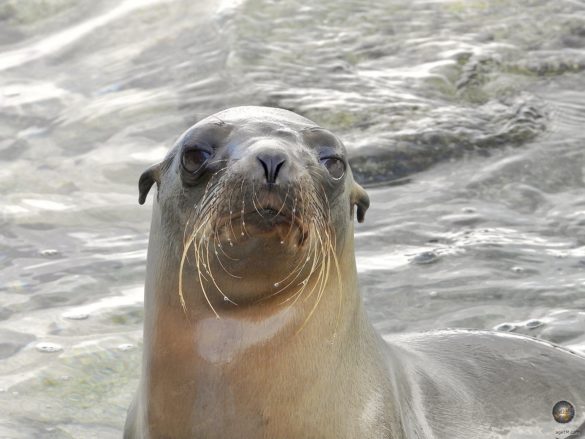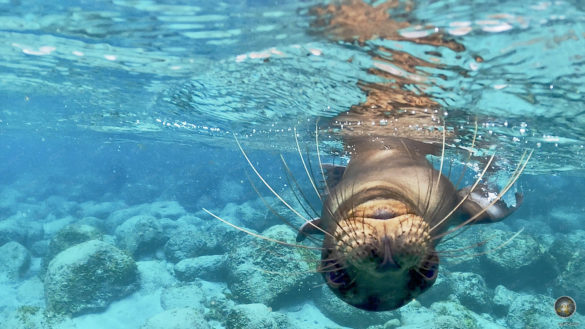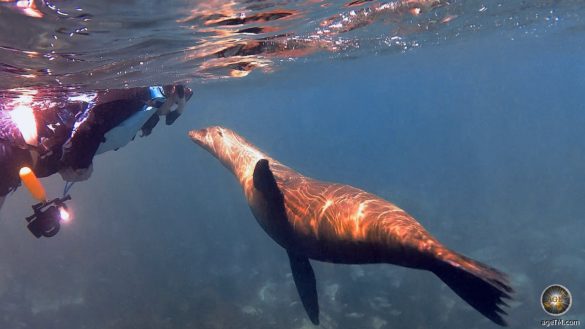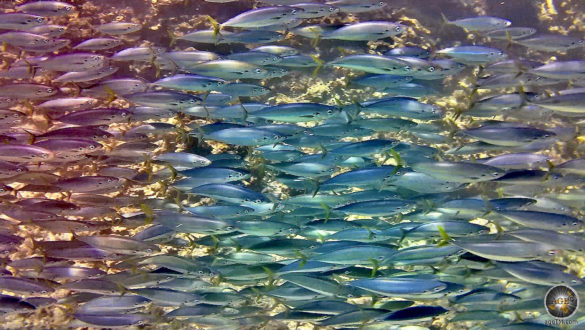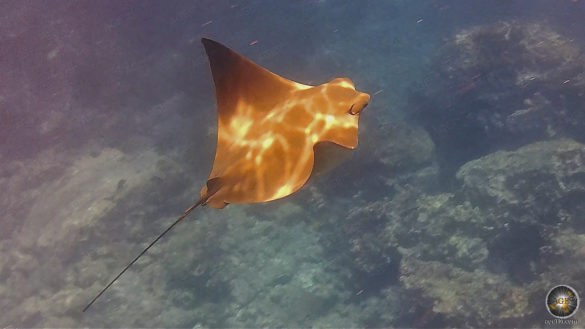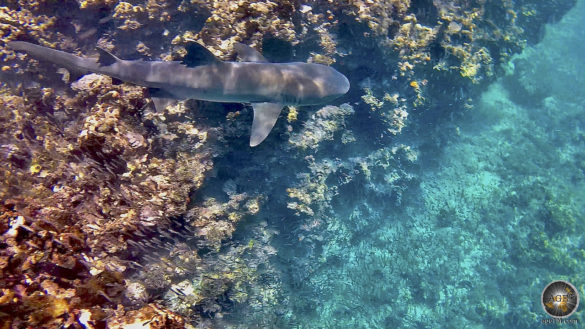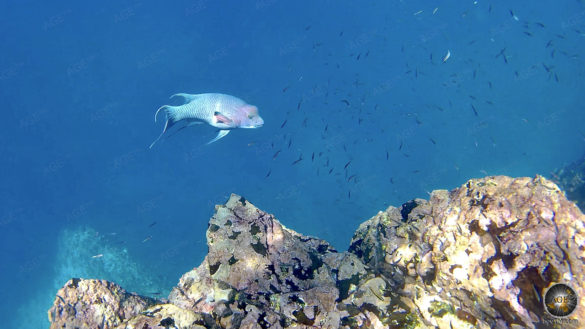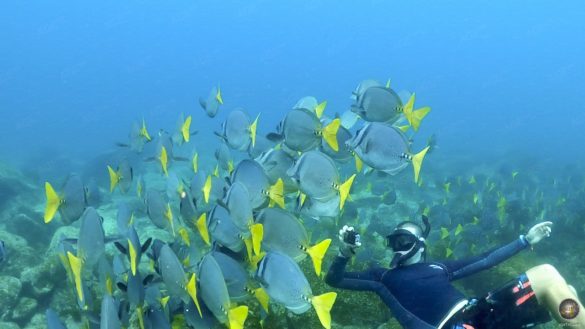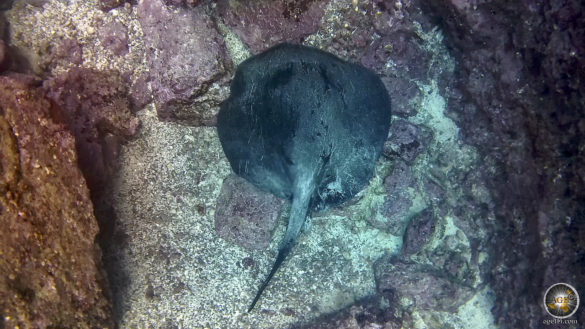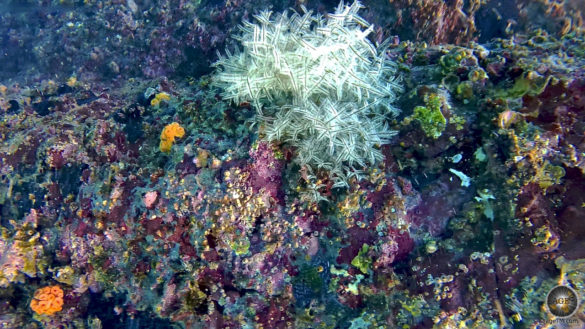A paradise for wildlife viewing!
The island of Espanola offers 60 km2 a rich wildlife. Large bird breeding colonies are right on the visitor path and the fluffy chicks are the star of the tour. The Galapagos Albatross (Phoebastria irrorata) only breeds on this island worldwide. Numerous Nazca boobies and some blue-footed boobies also nest here. The animals are relaxed and tolerate the visitors. A fantastic experience. In addition to the Galapagos albatross, there are other endemic species on the island: for example the curious Espanola Mockingbird (Mimus macdonaldi) and the saddle-shaped Espanola giant tortoise (Chelonoidis hoodensis). Male marine iguanas show an intense red-green color in the winter months. This is why the marine iguana subspecies of Espanola (Amblyrhynchus cristatus venustissimus) is nicknamed the Christmas Iguana. A real eye-catcher. Galapagos sea lions, cliff crabs, many other bird species and a beautiful underwater world offer an endless repertoire for new discoveries.
Wildlife of Espanola
The Nazca boobies show us hospitality. Fluffy balls of feathers, naked chicks, brooding parents and we are right in the middle of it all. None of the birds seem to fear humans. A few meters away sits a marine iguanas with bright red-green scales. Suddenly a second male appears and the rivals rush into battle. A wedged, scaly bundle winds, comes free, attacks. Then the decision was made. The loser withdraws with a defiant nod. What an experience. Just a few months later, I'll meet the Galapagos Albatross here. Espanola. I was able to set foot on this island twice, twice it gave me rich presents.
The Nazca boobies show us hospitality. Fluffy balls of feathers, naked chicks, brooding parents and we are right in the middle of it all. None of the birds seem to fear humans. A few meters away sits a marine iguanas with bright red-green scales. Suddenly a second male appears and the rivals rush into battle. A wedged, scaly bundle winds, comes free, attacks. Then the decision was made. The loser withdraws with a defiant nod. What an experience. Just a few months later, I'll meet the Galapagos Albatross here. Espanola. I was able to set foot on this island twice, twice it gave me rich presents.
Information on Espanola Island
About 3,2 million years ago Espanola rose for the first time above sea level. This makes the island one of the oldest islands in the Galapagos. Due to the movement of the continental plates, the island was shifted further and further south over time and moved away from the hot spot of the archipelago. That is why the shield volcano has now gone out. Erosion then flattened the island more and more until it got what it is today.
A walk on Espanola is a journey through time and a unique experience. The large breeding colonies and Espanola's biodiversity speak for themselves. Large albatrosses, motley marine iguanas and a varied underwater world. A visit is worthwhile at any time of the year.
Explore the underwater world of Espanola
A group of sea lions has discovered us and motivates us to do exuberant maneuvers. The game goes up and down and around. It is only when we are tired of playing that they slowly lose interest. At the end we find a huge stingray. Again and again we dive down near it, marvel, spread our arms and marvel anew. The colossus measures about 1,50 meters in diameter. We are impressed. About the stingrays, the sea lions and an eventful day.
A group of sea lions has discovered us and motivates us to do exuberant maneuvers. The game goes up and down and around. It is only when we are tired of playing that they slowly lose interest. At the end we find a huge stingray. Again and again we dive down near it, marvel, spread our arms and marvel anew. The colossus measures about 1,50 meters in diameter. We are impressed. About the stingrays, the sea lions and an eventful day.
Ecuador • Galapagos • Galapagos Tour • Galapagos Archipelago • Espanola Island
Experiences to Galapagos Island Espanola
 What can I do on Espanola?
What can I do on Espanola?
The highlight is the shore leave at Punta Suarez. The circular route of around two kilometers leads from the beach through bushland to a cliff and back to the beach. Past numerous lizards and impressive nesting sites. As a bonus, a blowhole can be seen along the way. When a large wave hits the crack in the rock, a fountain is created. This can reach heights of 20 to 30 meters.
In the marine areas of Espanola, both are allowed: snorkeling and scuba diving. A dive takes place at a depth of approx. 15 meters and is also suitable for beginners. Small caves in the rocky cliffs are an extra extra for explorers.
 What animal sightings are likely?
What animal sightings are likely?
Sea lions, marine iguanas, lava lizards, Nazca boobies, mockingbirds and Galapagos pigeons are particularly common. Occasionally blue-footed boobies nest on Espanola and with a little luck you can spot Galapagos falcons. Colorful schools of fish, rays and whitetip reef sharks await underwater. Often you can too swim with sea lions.
During its breeding season from April to December, the impressive Galapagos Albatross also populates the island and is easy to observe. The male marine iguanas on Espanola are very slightly reddish in color all year round. Their bright green-red color is only visible in winter.
Unfortunately, you will not discover the rare Espanola giant tortoise. The species was almost extinct but could be saved. Up until now, wild turtles have lived a bit away from the visitor path.
 How can I reach Espanola?
How can I reach Espanola?
Espanola is an uninhabited island. It can only be visited in the company of an official nature guide from the national park. This is possible with a cruise as well as on guided excursions. The excursion boats start from Puerto Baquerizo Moreno on the island of San Cristobal. Since Espanola does not have a jetty, people wade ashore in knee-deep water.
 How can I book a tour to Espanola?
How can I book a tour to Espanola?
Cruises on a south-east route through the Galapagos often visit Espanola as well. If you travel to the Galapagos individually, you can alternatively take a guided day trip to this beautiful island. Excursions start in San Cristobal. AGE ™ did Espanola with the local agency Wreck bay visited. Alternatively, you can also inquire at your accommodation in advance. Some hotels book tours directly, others give you contact details. Last minute seats are rarely available in the port of San Cristobal.
Sights & island profile
5 reasons for a trip to Espanola Island
![]() Species-rich island
Species-rich island
![]() Galapagos Albatross (April - December)
Galapagos Albatross (April - December)
![]() Magnificent coloring of the marine iguanas (December - February)
Magnificent coloring of the marine iguanas (December - February)
![]() Nazca booby nesting colony
Nazca booby nesting colony
![]() Sea water fountain
Sea water fountain
Factsheet Galapagos Island Espanola
| Spanish: Espanola English: Hood Island | |
| 60 km2 | |
| Highest point: 206 m | |
| approx. 3,2 million years -> one of the oldest Galapagos Islands (first appearance above sea level, below the surface the island is older) | |
| Pacific Ocean, Galapagos Archipelago geographically belongs to South America | |
| belongs to Ecuador | |
| pronounced arid vegetation; Salt bushes, Galapagos, Sesuvia | |
| Mammals: Galapagos Sea Lions Reptiles: Espanola giant tortoise, Espanola marine iguana (Christmas iguana), Espanola lava lizard Birds: Galapagos albatross, Espanola mockingbird, Nazca booby, blue-footed booby, Darwin finch, Galapagos dove, Galapagos hawk, swallow-tailed gull | |
| none; Uninhabited Island | |
| Visit only with an official nature guide |
Ecuador • Galapagos • Galapagos Tour • Galapagos Archipelago • Espanola Island
Localization information
 Where is Espanola Island located?
Where is Espanola Island located?
Espanola is part of the Galapagos National Park. The Galapagos Archipelago is a two-hour flight from mainland Ecuador in the Pacific Ocean. Espanola is the southernmost island in the entire archipelago. From Puerto Baquerizo Moreno on the island of San Cristobal, Espanola can be reached after a two-hour boat trip.
For your travel planning
 How is the weather in Galapagos?
How is the weather in Galapagos?
Temperatures are between 20 and 30 ° C all year round. December to June is the hot season and July to November is the warm season. The rainy season lasts from January to May, the rest of the year is dry season. During the rainy season, the water temperature is highest at around 26 ° C. In the dry season it drops to 22 ° C.
Ecuador • Galapagos • Galapagos Tour • Galapagos Archipelago • Espanola Island
Enjoy the AGE ™ Image Gallery: The Galapagos Island Espanola - Wildlife Above and Underwater
(For a relaxed slide show in full format, simply click on a photo and use the arrow key to move forward)
Ecuador • Galapagos • Galapagos Tour • Galapagos Archipelago • Espanola Island
Bill White & Bree Burdick, edited by Hooft-Toomey Emilie & Douglas R. Toomey for a project of the Charles Darwin Research Station, topographical data compiled by William Chadwick, Oregon State University (undated), Geomorphology. Age of the Galapagos Islands. [online] Retrieved on July 04.07.2021th, XNUMX, from URL: https://pages.uoregon.edu/drt/Research/Volcanic%20Galapagos/presentation.view@_id=9889959127044&_page=1&_part=3&.html
Galapagos Conservancy (oD), The Galapagos Islands. Espanola. [online] Retrieved on June 26.06.2021, XNUMX, from URL:
https://www.galapagos.org/about_galapagos/about-galapagos/the-islands/espanola/

